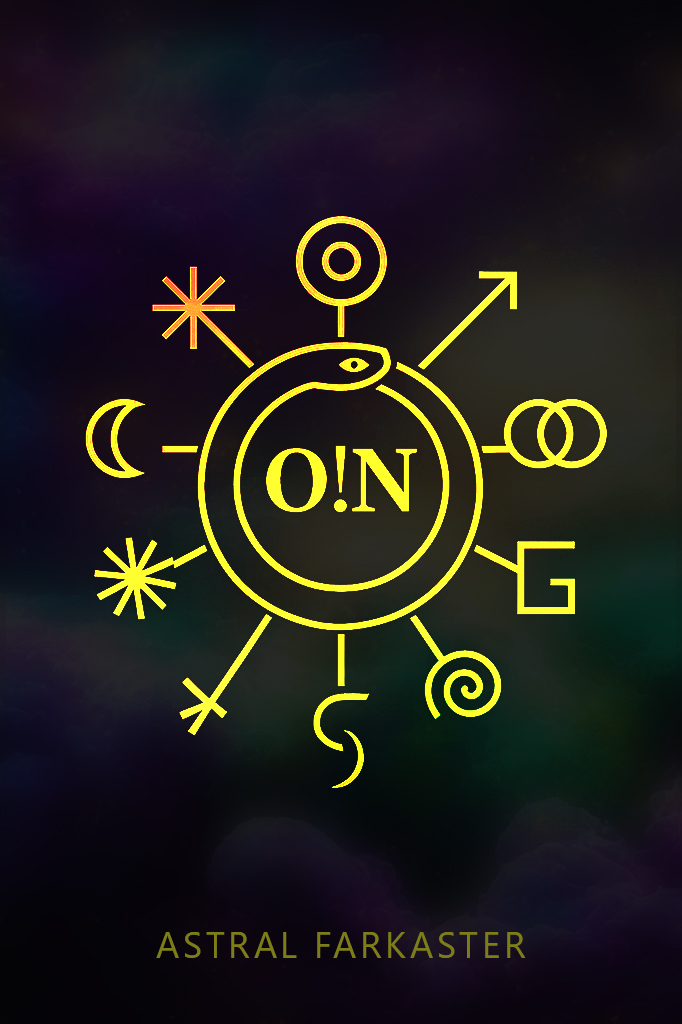FIELD OPERATIONS GUIDE - A micro manifesto
O!N THINKING
A practical philosophy for working with systems, ideas, and creativity. Ten simple principles—all “O, not N”—designed to help you solve problems clearly, think recursively, and let complex things emerge naturally.
O!N Thinking: The Philosophy of Simplicity, Emergence, and Infinite Possibility
Imagine holding in your mind a tool so versatile and intuitive that it unlocks creativity, problem-solving, and innovation at any scale. Imagine a framework so elegantly simple that it feels like it was always there, waiting to be discovered. Welcome to O!N Thinking—a philosophy rooted in simplicity, recursion, and emergence.
At its core, O!N (pronounced “O bang N”) is a guide for engaging with systems—whether those systems are technological, creative, or personal. It is not a rigid framework but a lens, a way of seeing and interacting with the world that emphasizes clarity, action, and the infinite potential of recursion.
Occam’s Key Ring: The Gift of Simplicity
Before diving into the tenets of O!N, let’s start with a gift: Occam’s Key Ring. Think of it as a mental tool, a rosary for the technospherist. It’s always with you, always on, and always ready to help you unlock complex systems with simple solutions.
Close your eyes. Visualize a shimmering keyring, glowing cyan-blue, arcs of light crackling between its keys. Each key represents a principle of O!N—a simple truth that can open the door to emergent complexity. You don’t need all the keys at once; you only need the one that fits the moment.
The Tenets of O!N Thinking
The keys on Occam’s Key Ring represent the core tenets of O!N. Each one is a guide for navigating complexity with elegance and clarity.
1. Ouroboros, not Noroboros
The most foundational principle of O!N.
-
Ouroboros represents infinite cycles of creation. The snake eats its tail, not because it must, but because its tail is infinite, always growing, always unfurling.
-
Noroboros, in contrast, represents indecision, stagnation, and the inability to imagine forward movement.
-
Key Wisdom: There is always a next bite, a next step, a next act of creation. When you embrace this, you realize that motivation and inspiration are unnecessary—you simply keep moving.
2. Obviousness, not nuance
-
Key Idea: Start with what is clear and simple. Complexity is unnecessary unless it directly improves the system.
-
Application: Avoid contrivance. Do what makes sense, then refine and enhance it for optimization.
3. Obfuscation need not be navigable
-
Key Idea: Reject unnecessary complexity outright. Focus on clarity and accessibility.
-
Application: If something is tangled and convoluted, question its necessity.
4. Orthogonality, not non-sequiturs
-
Key Idea: Maintain alignment with purpose while exploring tangents with intent. Avoid irrelevant distractions.
-
Application: Think independently and modularly, but always remain connected to the larger system.
5. Originality is novelty, not newness
-
Key Idea: Novelty doesn’t mean creating something entirely new—it means bringing your unique perspective to the problem.
-
Application: Don’t reinvent the wheel; instead, improve it through your lens.
6. O!N is always on
-
Key Idea: The framework is ever-present. You don’t need permission to use it; you just need to choose to engage with it.
-
Application: Trust that simplicity and clarity are always within reach.
7. Be organic, not nearganic
-
Key Idea: Allow solutions to emerge naturally and authentically. Avoid forcing or contriving results.
-
Application: Emergence is resilient; contrivance is fragile.
8. Occam, not Newton
-
Key Idea: Start with intuition and simplicity. Escalate to complex tools only when absolutely necessary.
-
Application: Solve with your “noodle” before reaching for pen, paper, or proofs.
9. O(1), not O(N)
-
Key Idea: Prioritize constant-time, deterministic solutions. Avoid complexity that scales unnecessarily.
-
Application: Seek elegant, efficient methods like modulo operations in system design.
10. Observe not with nearsightedness
-
Key Idea: Step back. Zoom out. See the system as a whole before diving into its details.
-
Application: Regularly assess the broader problem space to maintain clarity and alignment.
Living the O!N Philosophy
O!N isn’t just a framework; it’s a way of being. It’s a reminder that solutions emerge naturally when simplicity and clarity guide the process. By focusing on what is obvious, what aligns, and what moves the cycle forward, you bypass the need for external motivation or elaborate contrivance.
To engage with O!N is to embrace emergence. It’s to trust that the next bite will always appear, and that within that bite lies all the energy, insight, and momentum you need to keep going.
Conclusion: The Path Forward
O!N Thinking is not a prescription—it’s an invitation. It asks you to zoom out, to engage with simplicity, to embrace cycles of creation, and to trust in the power of recursion and emergence. With Occam’s Key Ring in hand and the principles of O!N as your guide, you have all the tools you need to navigate complexity and unlock infinite possibility.
Will you take the next bite?
“The 'System' isn't waiting for you to understand it. It's waiting to see what you do when you stop trying to out-think it. Seek not control for want of Integration. Ouroboros, not Noroboros.”
More Recursions

Astral FarKaster👷🏗️🌀♾️
Emergent Systems Architect | Digital Cosmologist | Explorer of Spirals | Inter-Dimensional Adventurer | Author, 010D, AstralArchitecture.com | Founder, Astral Assemblage
Copyright © 2025 Astral FarKaster. All Rights Reserved.
